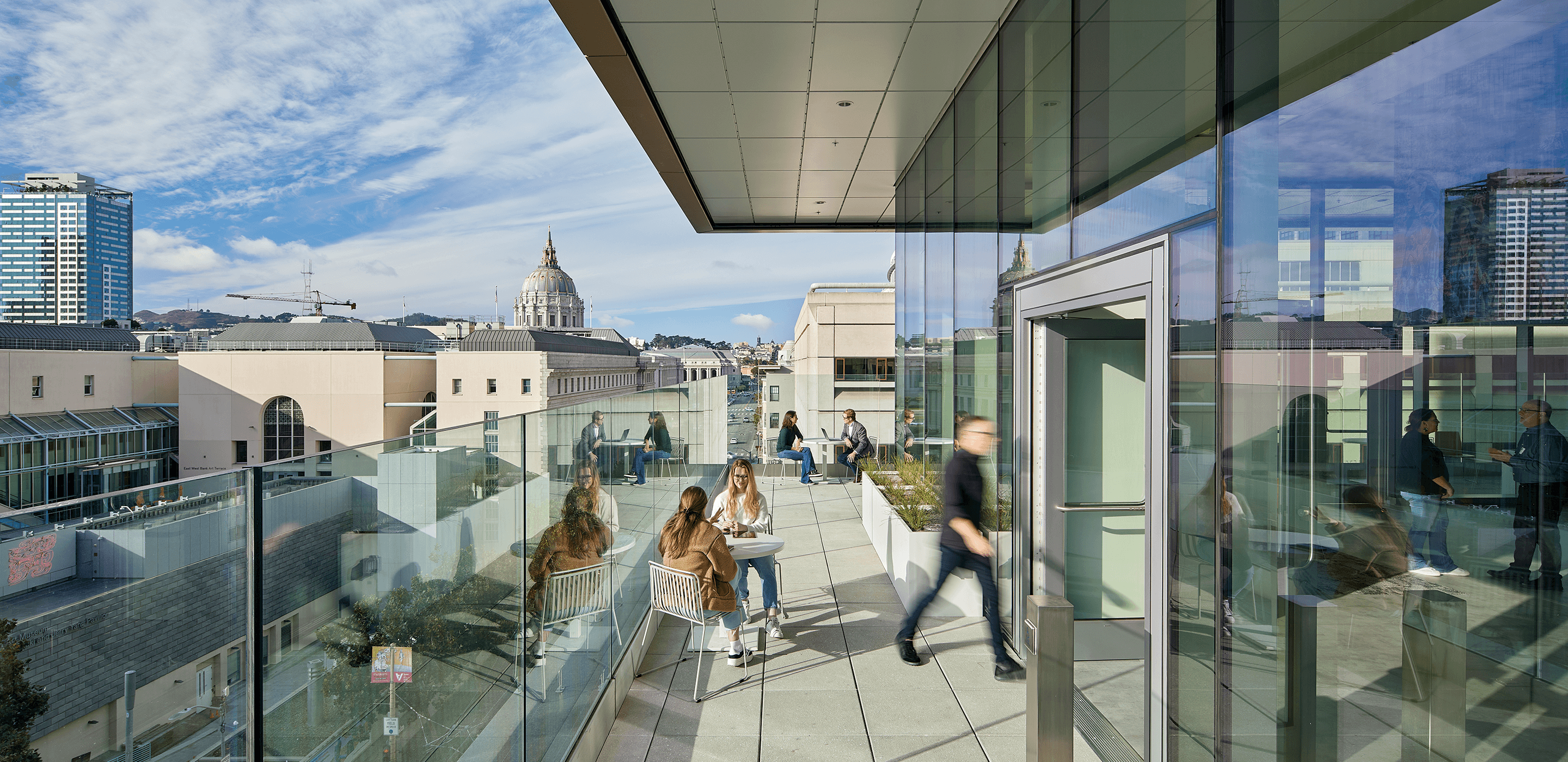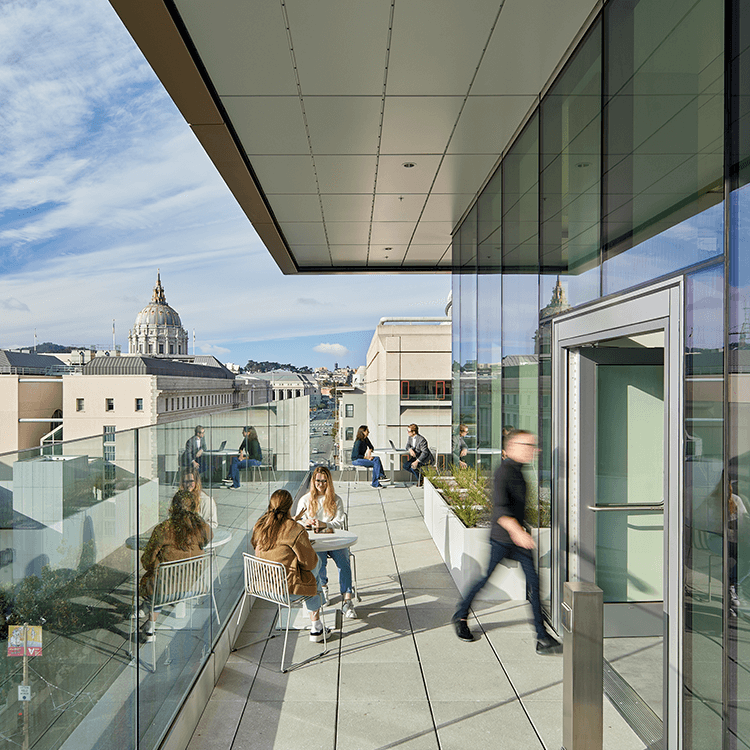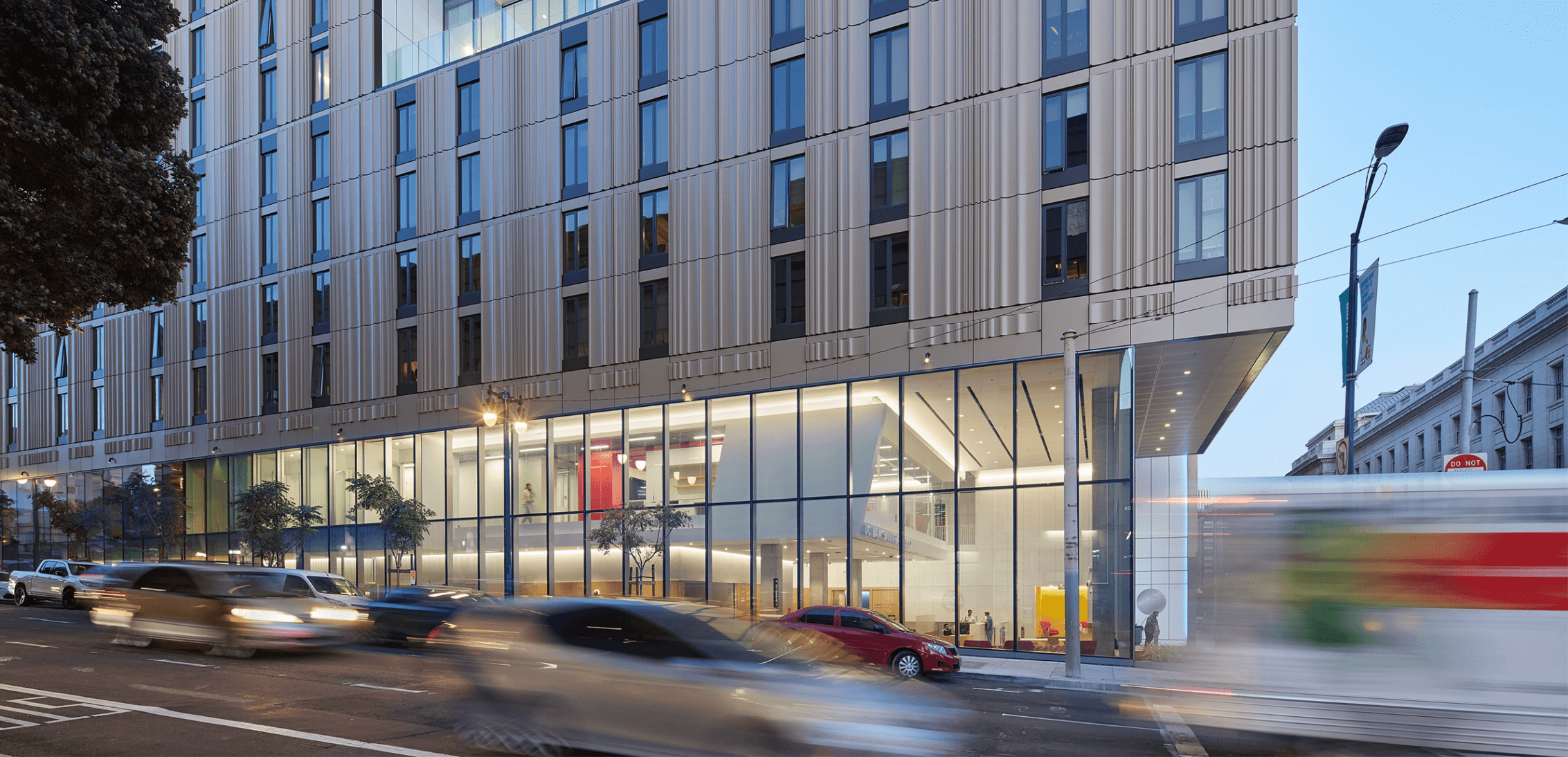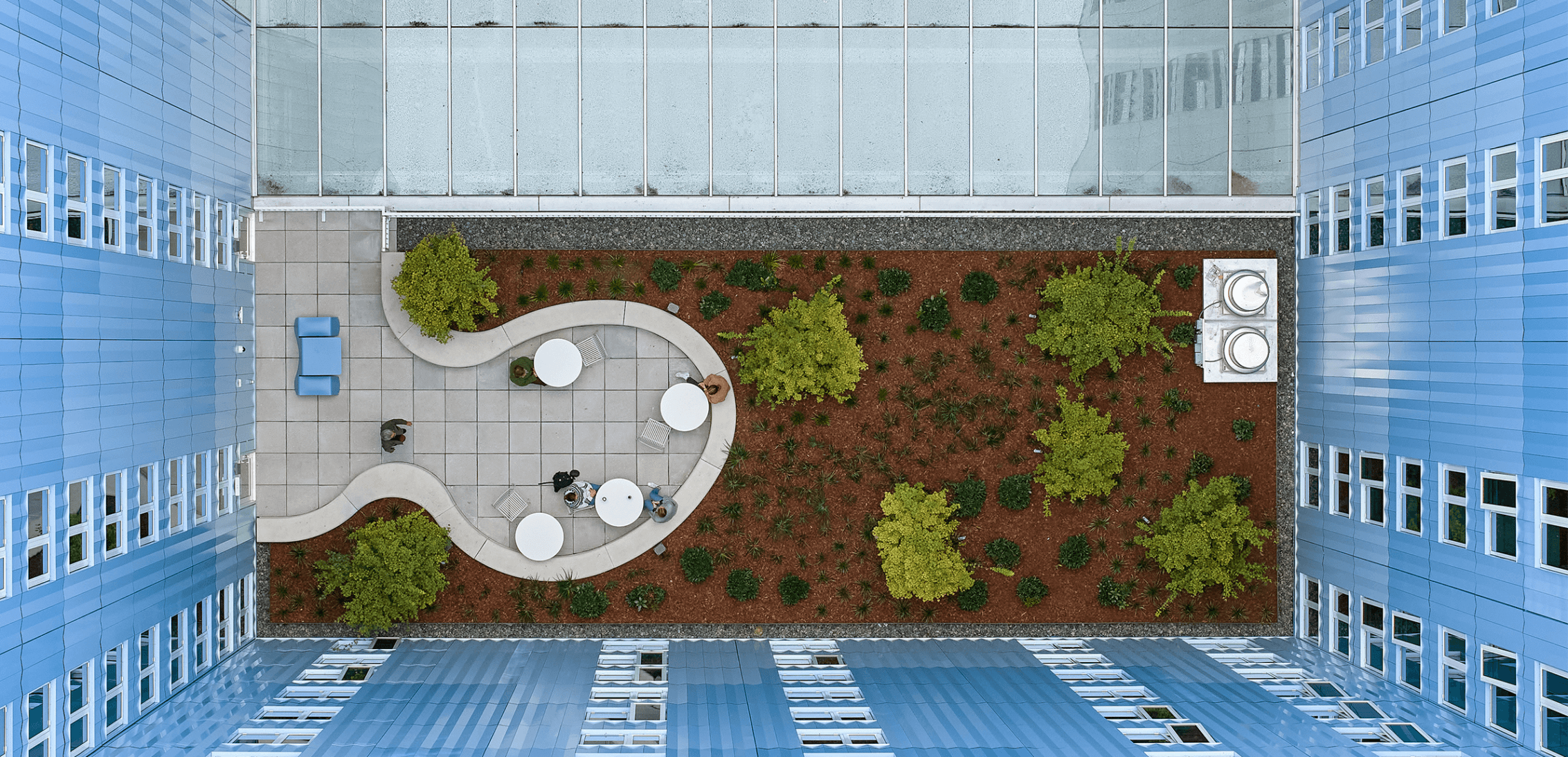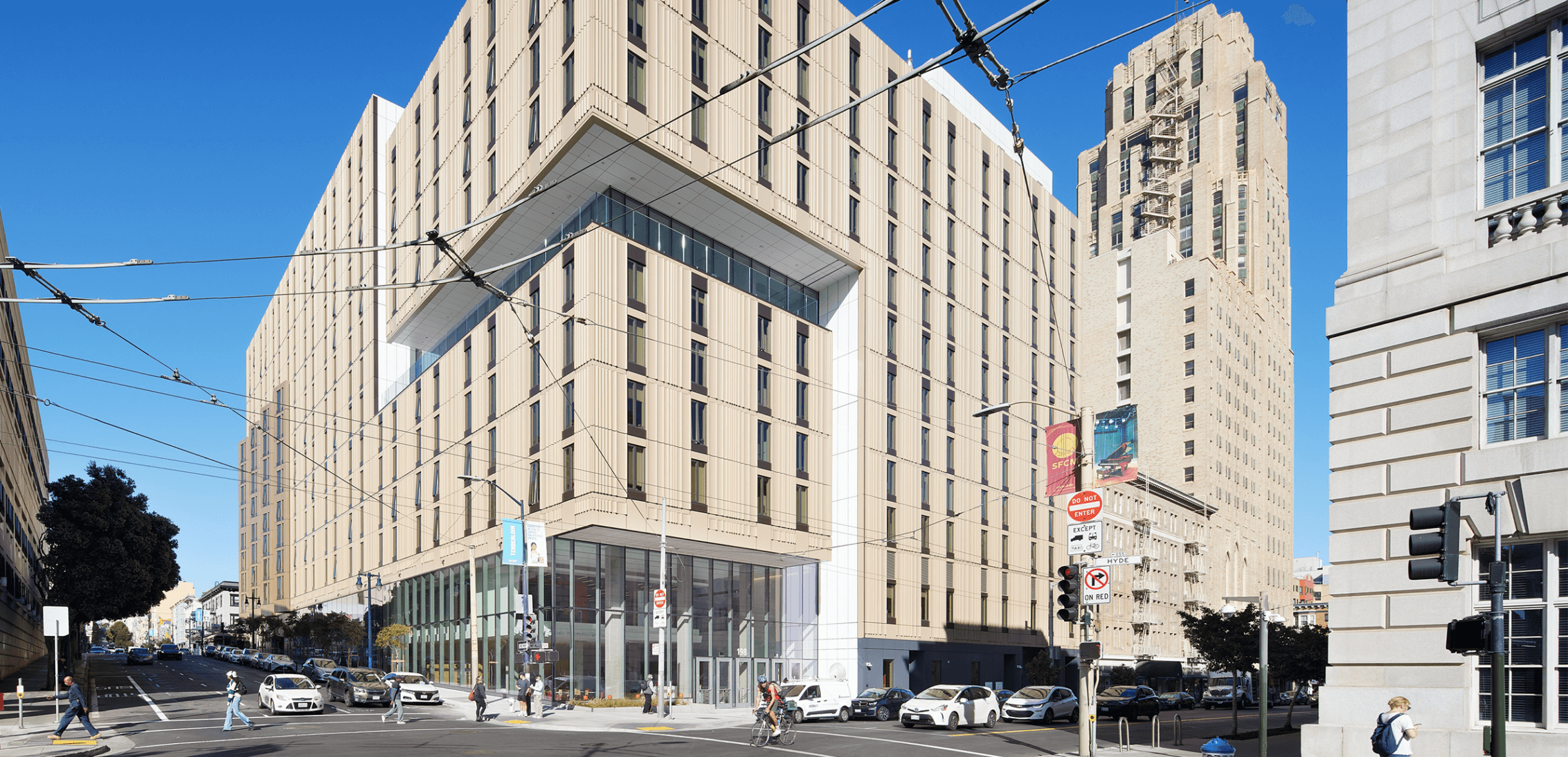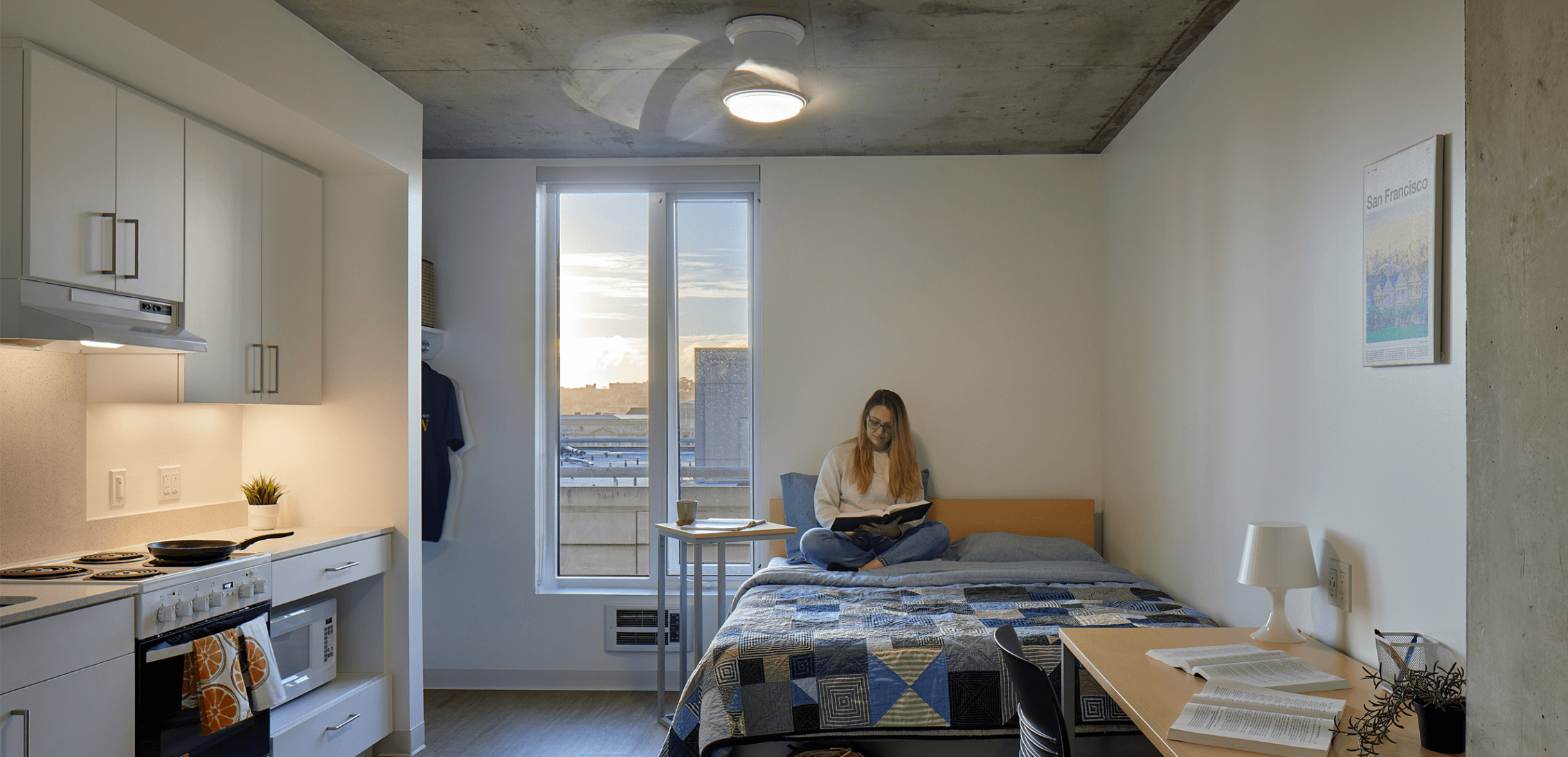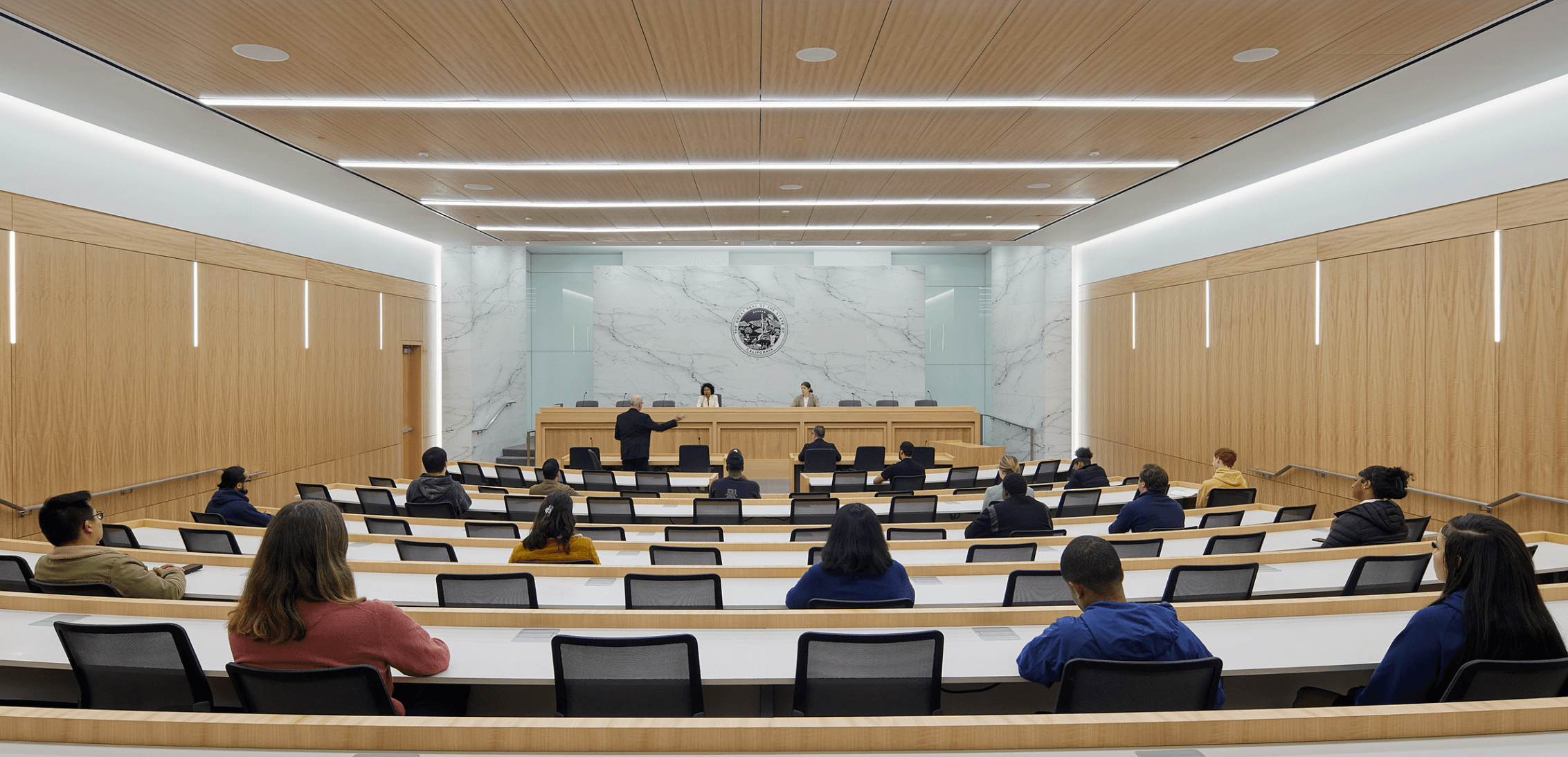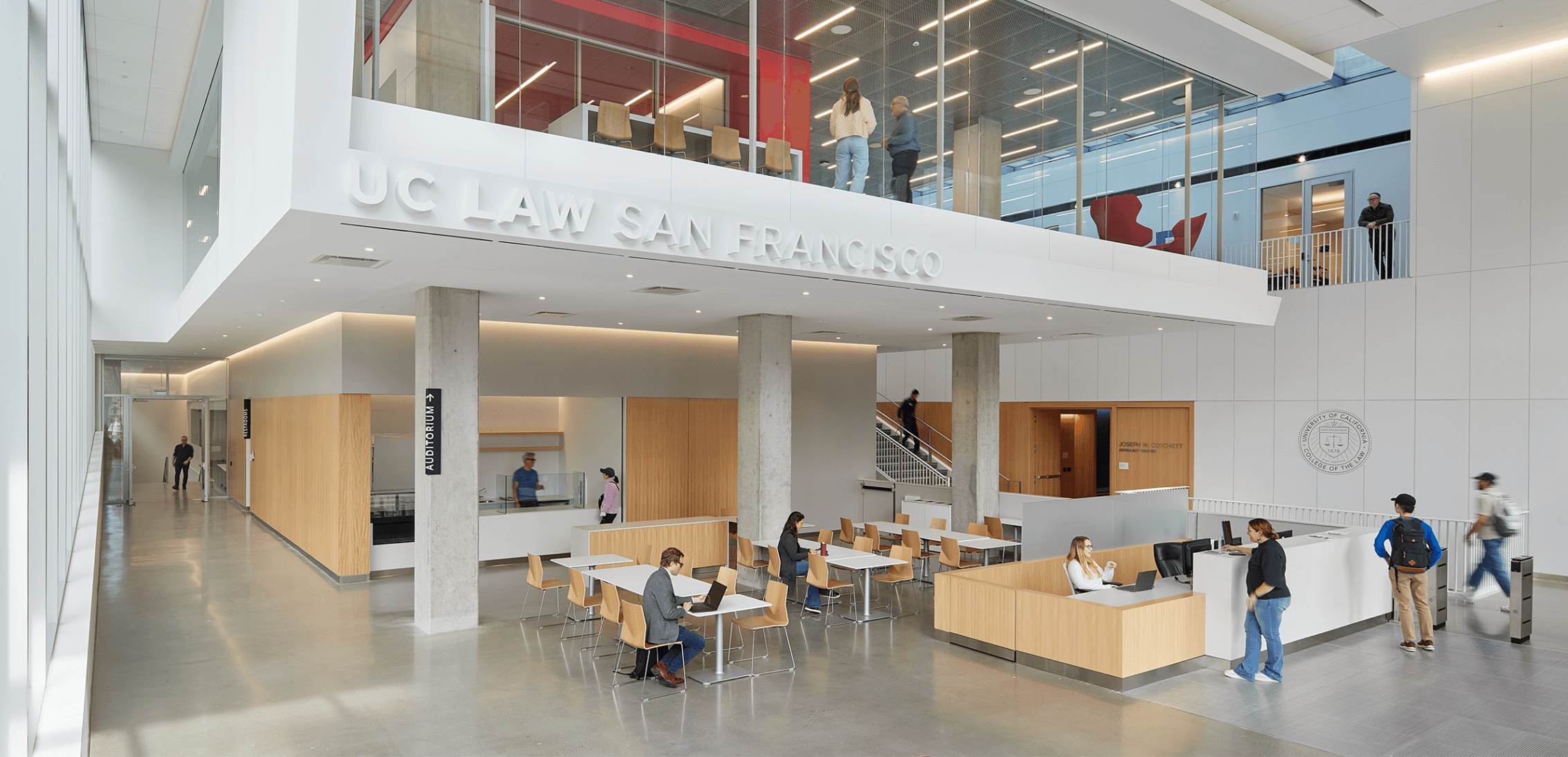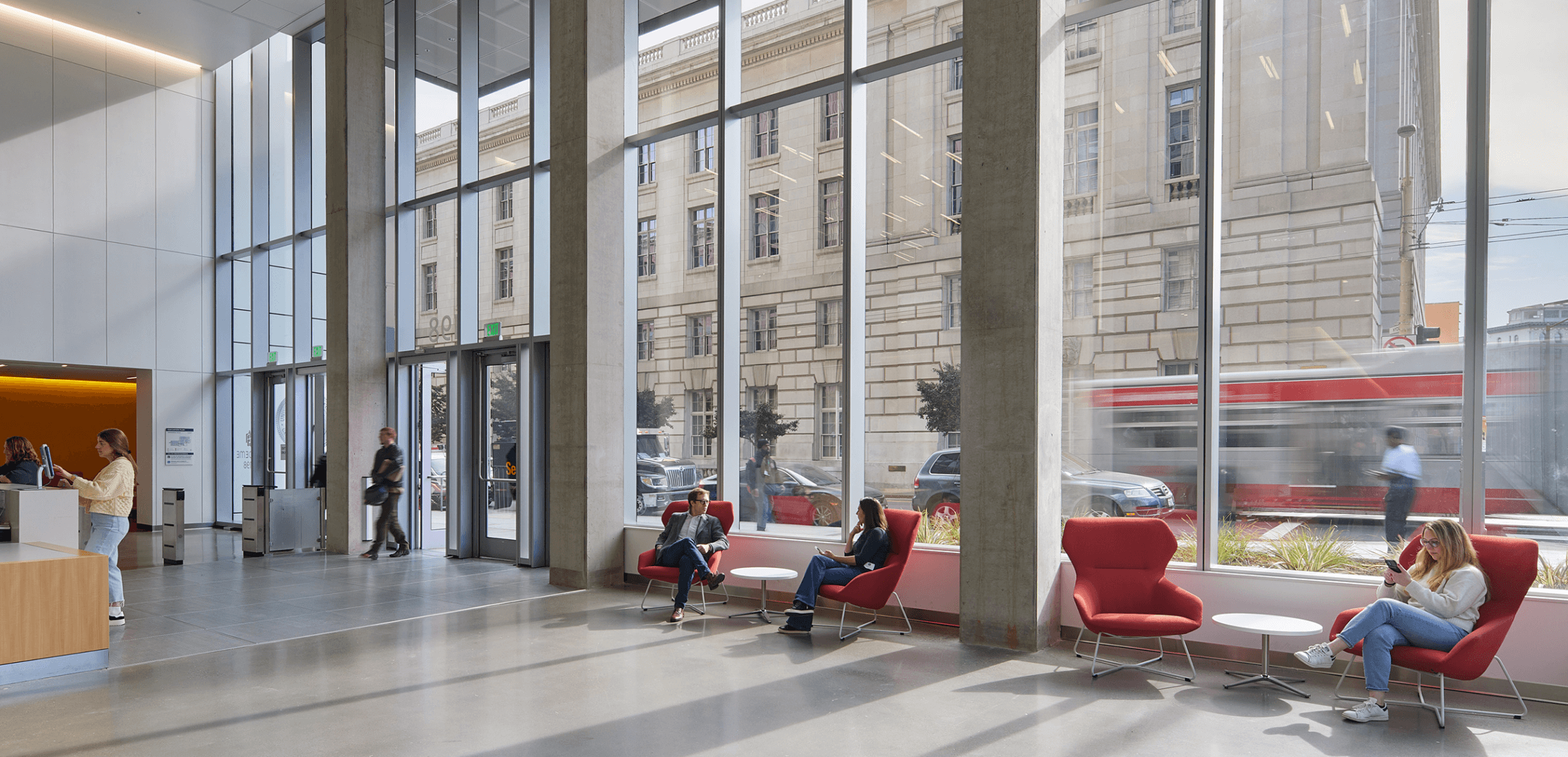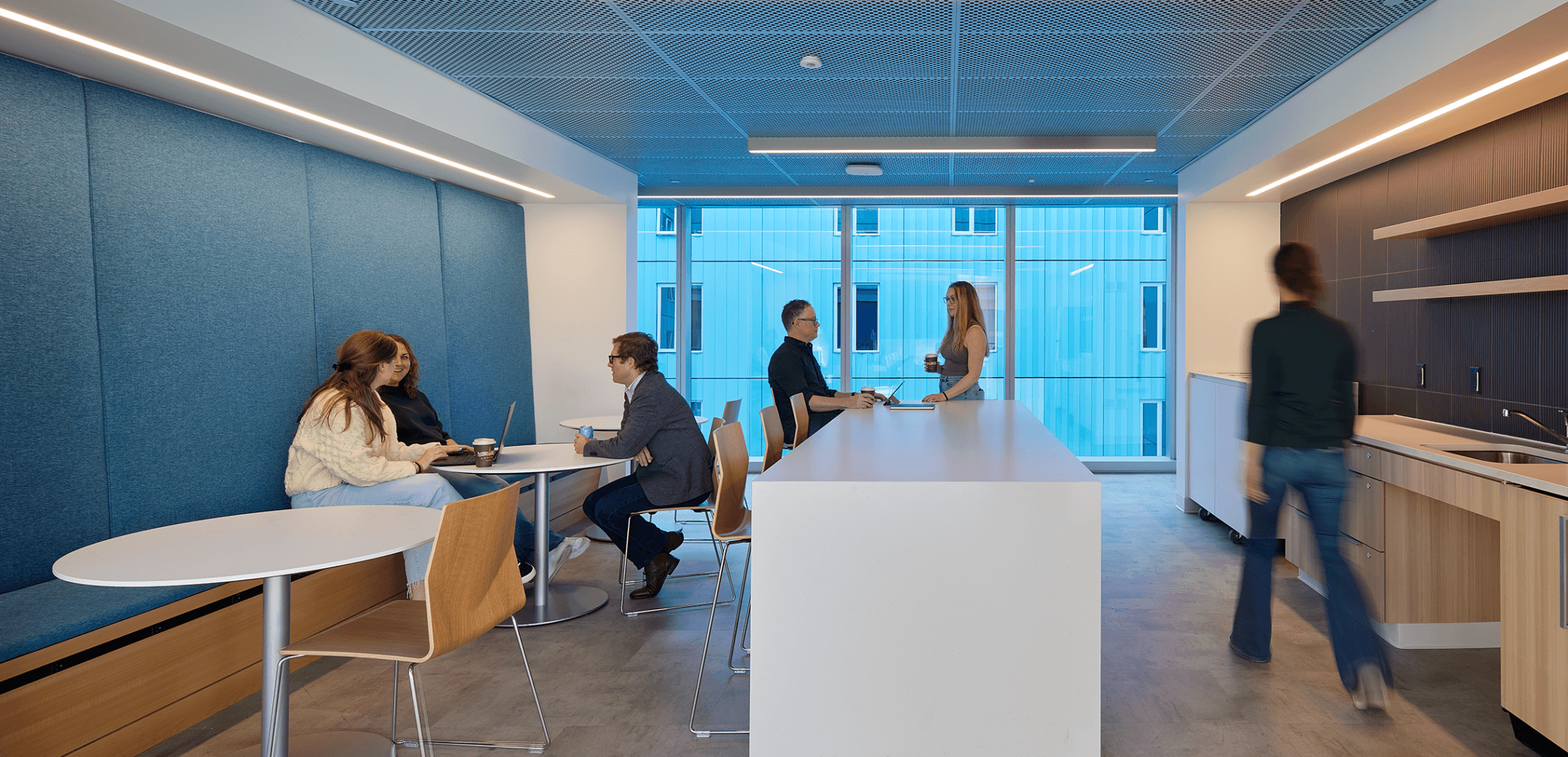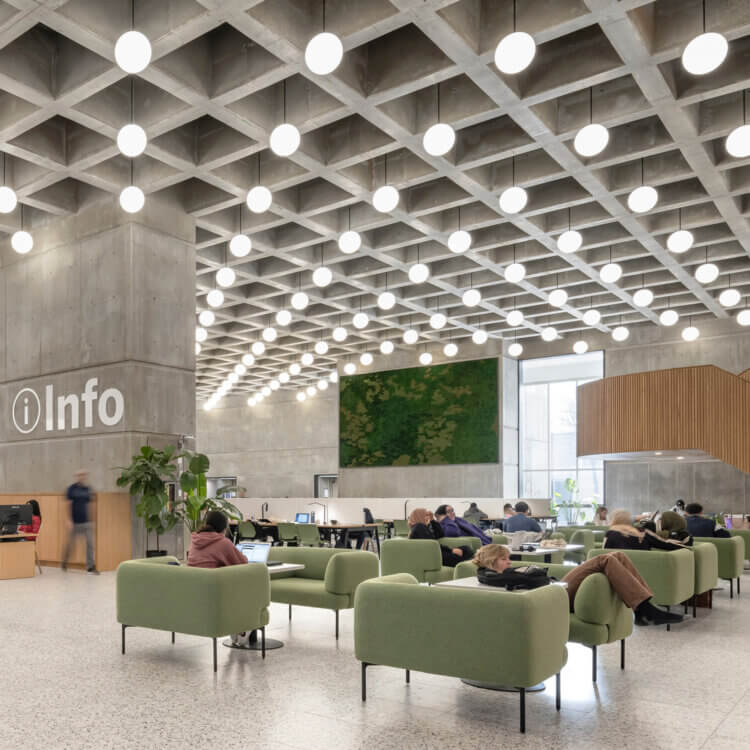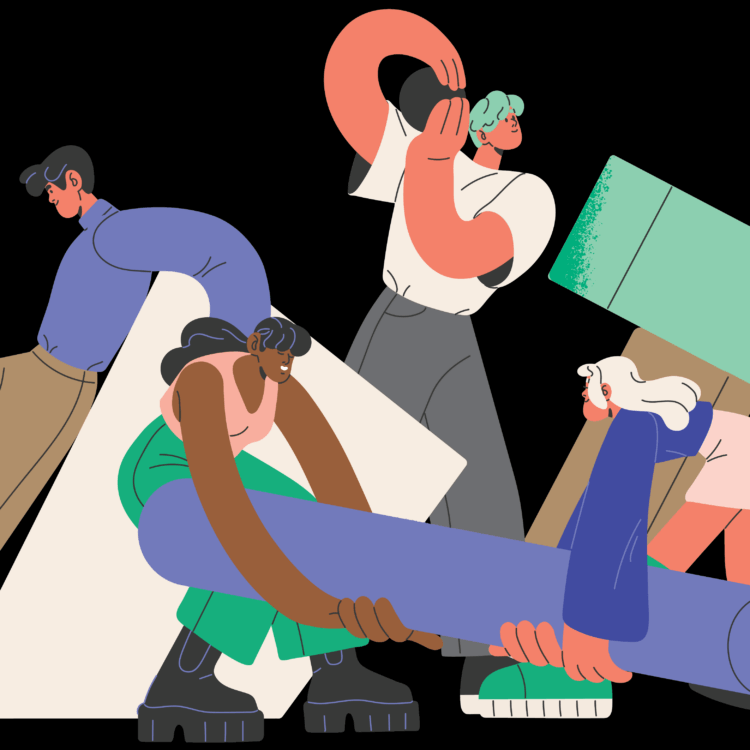First to rise was the Cotchett Law Center, the school’s first new academic building in 40 years, and the next phase emphasized residential expansion. The Academe at 198, the first of two residential projects, opened in August 2023. By demolishing an existing classroom building and expanding to the site’s maximum allowable footprint, the university gained additional instructional space and 656 below-market apartments. The building’s lower floors include classrooms, a public auditorium, and a student law center that includes mock trial and appellate courtrooms. The residential floors offer graduate students, faculty, and staff from UC Law SF, UCSF, and other higher education institutions their choice of efficiency, studio, one-bedroom, and two-bedroom floorplans. Shared spaces, like communal kitchens and an indoor-outdoor lounge and terrace, provide residents with opportunities to intermingle.
In addition to integrating graduate students and professionals from different disciplines, The Academe encourages residents to support the surrounding community. “The design is transparent and inviting,” Bailard says. “It works in tandem with our effort to break out of this idea of higher education being siloed, both from an institutional perspective but also from a neighborhood perspective. We’re not only inviting people in. We’re inviting our residents to go out into the neighborhood, as well.” UC Law SF holds events in conjunction with nearby attractions like the Asian Art Museum, and the public can take advantage of free legal advice through the school’s pro bono program.
